
Cattleya pink hybrids - Plant
(MRP Inclusive of all taxes)
- Shipping ₹79 for entire order
- Dispatch in 7 days
- Country of origin: India

(MRP Inclusive of all taxes)
 Save 29%
Save 29%
Air Purifier Money Plant with Pot The Air Purifier Money Plant, also known as Pothos or Epipremnum aureum, is a stunning indoor plant that...
View full details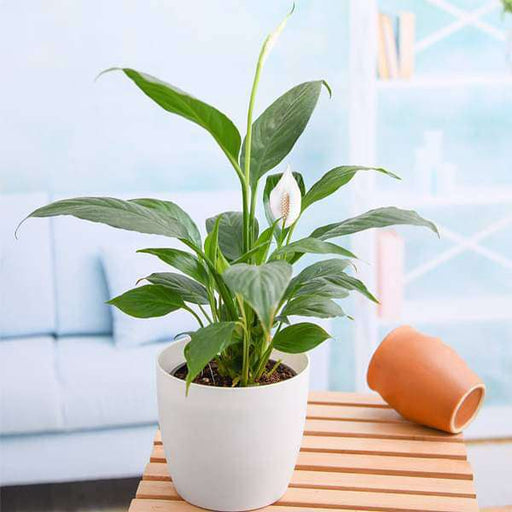
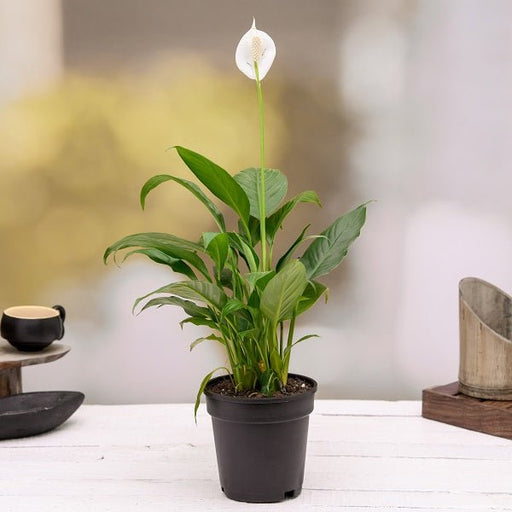 Save up to 15%
Save up to 15%
Peace Lily, Spathiphyllum - Plant The Peace Lily, scientifically known as Spathiphyllum, is a stunning houseplant celebrated for its elegant white...
View full details
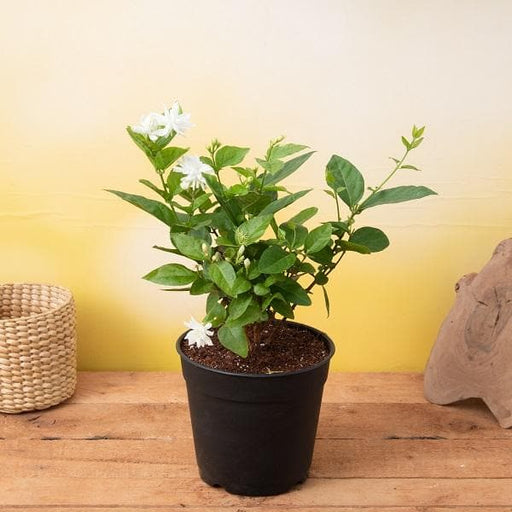 Save 25%
Save 25%
Jasminum sambac, Mogra, Arabian Jasmine - Plant Jasminum sambac, commonly known as Mogra or Arabian Jasmine, is a fragrant flowering plant...
View full details
 Save 18%
Save 18%
Combo Constituents Includes the Parijat Tree (Night-Flowering Jasmine), a culturally significant plant with fragrant flowers. Description The Pari...
View full details
 Save 25%
Save 25%
Miniature Rose, Button Rose (Any Color) - Plant The Miniature Rose, also known as the Button Rose, is a charming and compact flowering plant that ...
View full details Save 25%
Save 25%
Damascus Rose, Scented Rose (Any Color) - Plant The Damascus Rose, also known as Rosa damascena, is a timeless symbol of beauty and romanc...
View full details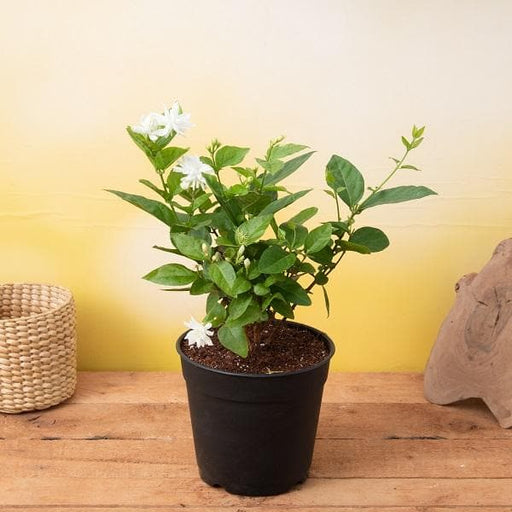
 Save 17%
Save 17%
Beautiful Fragrant Mogra, Arabian Jasmine Plant with Pot The Beautiful Fragrant Mogra, also known as Arabian Jasmine (Jasminum sambac), is...
View full details Save 15%
Save 15%
Pack of Vermicompost and Neem Cake for House Plants Transform your indoor garden with our premium Pack of Vermicompost and Neem Cake, spec...
View full details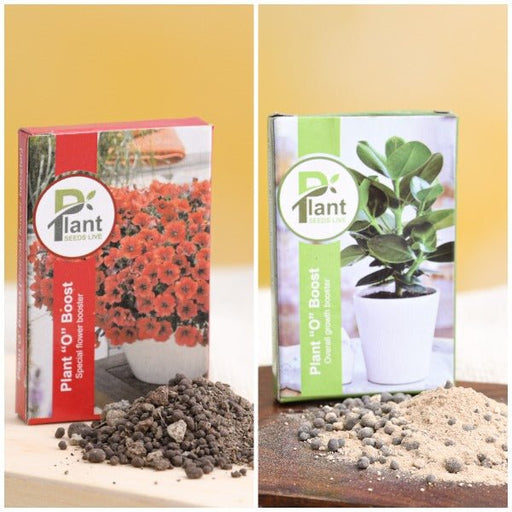
Pack of Plant Growth and Flower Boosters Unlock the full potential of your garden with our Pack of Plant Growth and Flower Boosters! This ...
View full details Save 38%
Save 38%
Combo of Jeevamrut and Neem Raksha for Easy Growth and Protection of Houseplants Transform your indoor garden with our exclusive combo of ...
View full details Save 22%
Save 22%
Plant Nutrients Kit (Pack of 16) for a Healthy Garden Transform your garden into a lush paradise with our Plant Nutrients Kit, featuring 1...
View full details Save 16%
Save 16%
Combo of Top Plant Fertilizers Elevate your gardening game with our exclusive Combo of Top Plant Fertilizers, featuring two bags of premiu...
View full details Save 24%
Save 24%
Pack of 4 Additives to Make Soil Healthy and Nutrient Rich Transform your garden into a thriving ecosystem with our Pack of 4 Additives de...
View full details Save 30%
Save 30%
Transform your gardening experience with our premium Combo of Perlite and Vermiculite. This unique blend is designed to enhance soil aeration and ...
View full details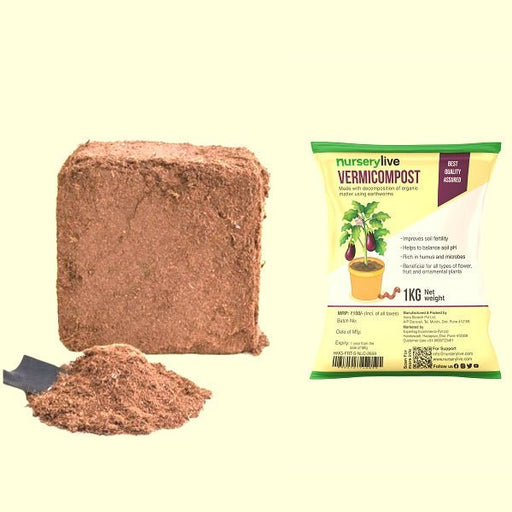 Save 27%
Save 27%
Combo of 2 Vermicompost and Cocopeat - Enrich Your Soil Naturally! Transform your garden into a thriving ecosystem with our Combo of 2 Ver...
View full details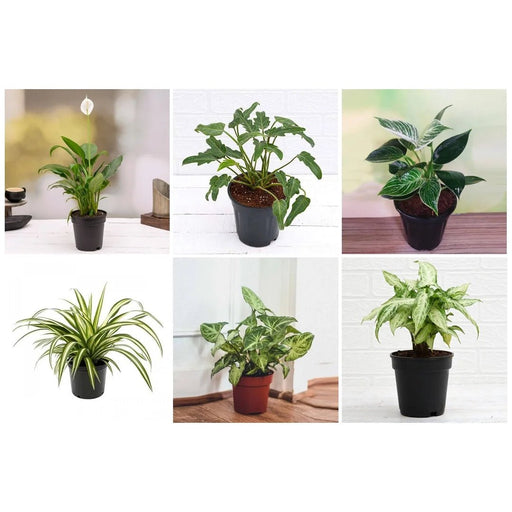
 Save 35%
Save 35%
Best 6 Plants for Perfect Indoor Garden Transform your living space into a lush oasis with our curated collection of the Best 6 Plants for a...
View full details
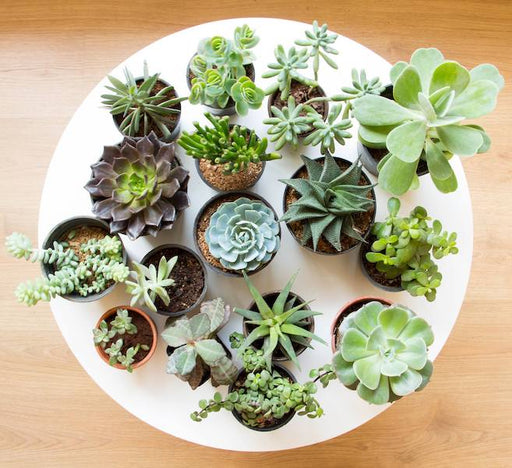 Save up to 50%
Save up to 50%
Mini Succulent Garden Pack Transform your space with our Mini Succulent Garden Pack, featuring a delightful collection of 4 any variety beautiful s...
View full details
 Save 30%
Save 30%
5 Best Fragrant Plants Transform your garden or indoor space into a fragrant paradise with our curated selection of the 5 Best Fragrant Plants. Th...
View full details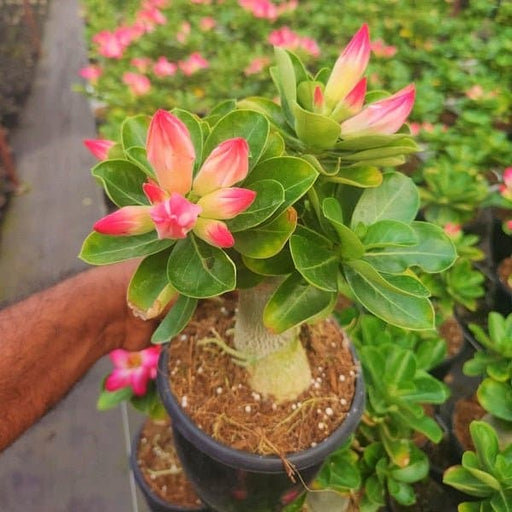
 Save 24%
Save 24%
Set of 2 Bonsai Looking Grafted Adeniums Transform your indoor or outdoor space with our exquisite Set of 2 Bonsai Looking Grafted Adenium...
View full details Save 45%
Save 45%
Top 4 Die Hard Succulents Pack Transform your indoor or outdoor space with our Top 4 Die Hard Succulents Pack, featuring a curated selecti...
View full details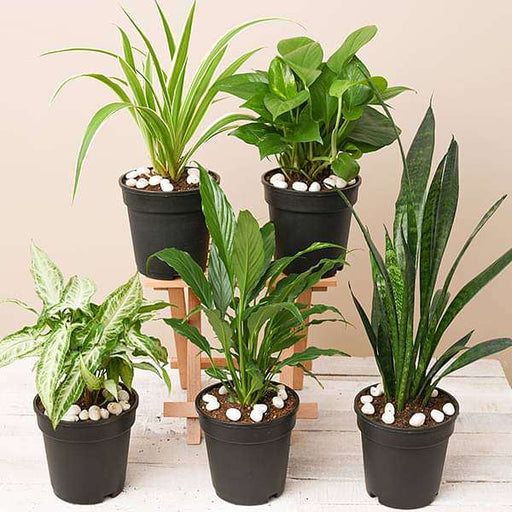
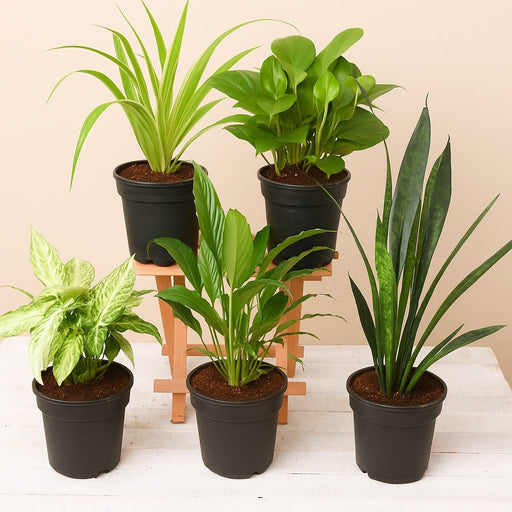 Save 30%
Save 30%
5 Best Indoor Plants Pack Transform your living space into a lush oasis with our '5 Best Indoor Plants Pack.' This carefully curated collection fe...
View full details
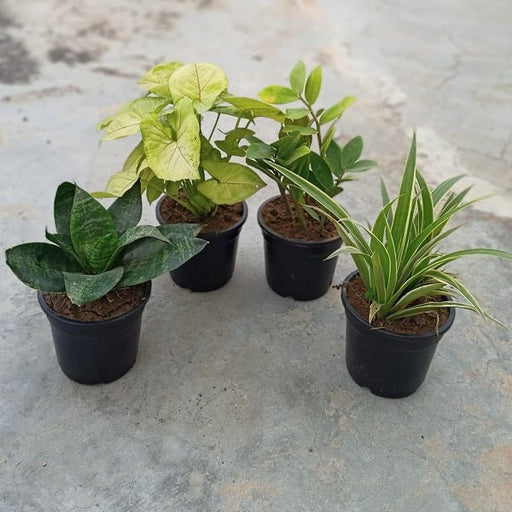 Save 25%
Save 25%
Set of 4 Evergreen Air Purifier Plant Pack Transform your indoor space into a lush, green oasis with our Set of 4 Evergreen Air Purifier Pla...
View full details| SrNo | Item Name |
|---|---|
| 1 | Cattleya pink hybrids - Plant |
The Cattleya Pink Hybrids are a stunning addition to any orchid collection, known for their vibrant pink blooms and delightful fragrance. These hybrids are a result of meticulous breeding, combining the best traits of various Cattleya species to create a visually striking and resilient plant. With their large, showy flowers, they are perfect for both novice and experienced orchid enthusiasts.
What makes Cattleya Pink Hybrids special is their ability to thrive in a variety of environments while producing breathtaking blooms that can last for weeks. These orchids are not only visually appealing but also symbolize love and beauty, making them a popular choice for gifts and special occasions.
Special features of Cattleya Pink Hybrids include their robust nature and adaptability. They can flourish in both indoor and outdoor settings, provided they receive adequate light and humidity. Their blooms can reach up to 6 inches in diameter, showcasing intricate patterns and vibrant colors that captivate any observer.
Cattleya Pink Hybrids contribute positively to the environment by improving air quality and providing habitats for pollinators. Their cultivation promotes biodiversity and encourages sustainable gardening practices.
If you think caring for Cattleya pink hybrids is like a walk in the park, think again! These beauties require a bit of finesse. They thrive in bright, indirect light and love a good humidity boost. Water them when the top inch of soil feels dry, but don’t drown them—these orchids are not fans of soggy feet! Fertilize every couple of weeks during the growing season, and watch them bloom like they’re auditioning for a floral fashion show. Remember, patience is key; they might take their sweet time to flower, but when they do, it’s worth the wait!
Ready to play plant parent? Propagating Cattleya pink hybrids is like a botanical magic trick! You can do it through division, which is basically giving your plant a haircut—just make sure each division has a few roots and pseudobulbs. Timing is everything; spring is the best season for this horticultural endeavor. After you’ve made your cuts, let the wounds callous over before potting them up. It’s like giving them a spa day before they start their new life. With a little TLC, you’ll have new plants in no time, and who doesn’t want more pink orchids in their life?
Mark your calendars, folks! The blooming season for Cattleya pink hybrids is like the Super Bowl of the orchid world. Typically, these show-stoppers bloom in late winter to early spring, but don’t be surprised if they throw a surprise party in the fall. The key to getting them to bloom is proper care—think of it as coaxing a shy friend out of their shell. Provide them with the right light, humidity, and nutrients, and they’ll reward you with stunning flowers that’ll make your neighbors green with envy. Just remember, patience is a virtue; they bloom on their own schedule!
Potting Cattleya pink hybrids is like choosing the right outfit for a first date—get it right, and you’ll be the talk of the town! Use a well-draining orchid mix, ideally with bark and perlite, to keep those roots happy. Choose a pot that’s just a tad bigger than the root ball; too much space can lead to root rot, and nobody wants that drama. When repotting, do it after they bloom to avoid any sulking. And don’t forget to give them a little love and encouragement as you tuck them into their new home. They’ll appreciate the effort!
If you think Cattleya pink hybrids are low-maintenance, think again! These divas demand bright, indirect light to strut their stuff. Too much direct sunlight, and they’ll get sunburned—ouch! Too little, and they’ll sulk in the corner, refusing to bloom. A south or east-facing window is their happy place. If you notice the leaves turning yellow, it’s a sign they’re not getting enough light. On the flip side, if they’re turning a crispy brown, it’s time to dial it back. Finding that sweet spot is like a dance; once you get it right, they’ll reward you with a stunning floral display!
Cattleya pink hybrids are like that friend who can’t stand dry air—give them humidity, or they’ll throw a fit! Ideally, they thrive in humidity levels of 50-70%. If your home is drier than a desert, consider using a humidity tray or a humidifier. Misting them can also help, but don’t overdo it; they’re not fans of soggy leaves. Think of it as creating a tropical paradise in your living room. With the right humidity, your Cattleya will be happier than a kid in a candy store, and you’ll be rewarded with those gorgeous blooms!
Fertilizing Cattleya pink hybrids is like giving them a gourmet meal—do it right, and they’ll flourish! Use a balanced orchid fertilizer, diluted to half strength, every couple of weeks during the growing season. Think of it as their version of a spa treatment. In the winter, cut back on the feeding; they’re in a bit of a beauty sleep mode. Over-fertilizing can lead to burnt roots, and nobody wants that drama. With the right nutrients, your Cattleya will be the belle of the ball, flaunting those stunning pink blooms like they own the place!
Ah, pests—the uninvited guests at the orchid party! Cattleya pink hybrids can attract a variety of critters, from aphids to mealybugs. Keep an eye out for any signs of infestation; if you spot them, it’s time to take action! A gentle wash with soapy water can do wonders, or you can use insecticidal soap for a more heavy-duty approach. Prevention is key; keep your plants clean and well-cared for to minimize the chances of pests crashing the party. With a little vigilance, your Cattleya will remain pest-free and ready to dazzle!
Cattleya pink hybrids are like Goldilocks when it comes to temperature—not too hot, not too cold, but just right! They thrive in temperatures between 65°F and 85°F during the day and prefer a slight drop at night. If your home resembles a sauna or an icebox, these orchids might not be too happy. Sudden temperature changes can stress them out, leading to unhappy blooms. So, keep them cozy and comfortable, and they’ll reward you with a floral display that’ll make your heart sing!
Just like us, Cattleya pink hybrids can fall ill, and nobody wants to see their plant under the weather! Common diseases include root rot and fungal infections, often caused by overwatering or poor air circulation. Keep an eye out for yellowing leaves or mushy roots—those are red flags! If you catch a disease early, you can often save your plant with some careful pruning and repotting. Prevention is the best medicine; ensure good drainage and airflow to keep your Cattleya healthy and thriving. With a little TLC, your orchids will be back to their fabulous selves in no time!
The world of Cattleya pink hybrids is like a candy store—so many varieties to choose from! Each one boasts its unique charm, from the delicate pastel pinks to the vibrant magentas. Some are known for their large, showy blooms, while others have a more subtle elegance. Exploring the different varieties is like going on a treasure hunt; you never know what stunning beauty you’ll discover next. Whether you’re a collector or just starting, there’s a Cattleya pink hybrid out there that’s perfect for you. Happy hunting!
Cattleya pink hybrids are stunning orchids that flaunt vibrant pink blooms, combining the best traits of their parent species. These beauties are not just a feast for the eyes; they also bring a touch of elegance to any space. Think of them as the divas of the plant world, demanding attention and admiration!
Caring for Cattleya pink hybrids is like pampering a celebrity. They love bright, indirect light, moderate humidity, and well-draining potting mix. Water them when the top inch of soil dries out, and don’t forget to feed them with orchid fertilizer during the growing season. Treat them right, and they’ll reward you with breathtaking blooms!
Cattleya pink hybrids thrive in a temperature range of 65°F to 85°F. They’re not fans of extreme cold or heat, so keep them cozy. Think of them as Goldilocks; they want it just right! A little fluctuation is fine, but avoid frost like it’s an ex at a party!
Watering Cattleya pink hybrids is an art, not a science. Generally, water them every 1-2 weeks, allowing the potting mix to dry out between waterings. Overwatering is their nemesis, so channel your inner Goldilocks—too much or too little, and they’ll let you know with droopy leaves!
Cattleya pink hybrids prefer a potting mix that’s as airy as a cloud! A blend of bark, perlite, and sphagnum moss works wonders, providing excellent drainage and aeration. Think of it as their personal spa treatment—keeping their roots happy and healthy while they strut their floral stuff!
Cattleya pink hybrids typically bloom in late winter to early spring, but they can surprise you with an encore performance! Their blooms last for several weeks, so get your camera ready. It’s like waiting for the next season of your favorite show—worth every moment of anticipation!
Absolutely! Cattleya pink hybrids are perfect for indoor gardening. Just ensure they receive plenty of bright, indirect light and maintain humidity levels. They’ll thrive in a sunny window, turning your home into a mini tropical paradise. Just be prepared for the compliments—they’ll be the talk of the town!
Yes, Cattleya pink hybrids are hungry little divas! Feed them with a balanced orchid fertilizer every 2-4 weeks during the growing season. They’ll appreciate the extra nutrients, and you’ll be rewarded with stunning blooms. Just remember, too much fertilizer can be like too much cake—delicious but potentially disastrous!
Repotting Cattleya pink hybrids is like giving them a fresh wardrobe! Do it every 1-2 years or when the potting mix breaks down. Gently remove the plant, trim any dead roots, and place it in fresh mix. Choose a pot that’s just a tad bigger—no one likes to feel cramped!
Cattleya pink hybrids can attract pests like aphids, mealybugs, and spider mites. Keep an eye out for these uninvited guests! If you spot them, a gentle spray of insecticidal soap or neem oil will send them packing. Think of it as a bouncer for your plant party—keeping the riffraff out!
Yes, Cattleya pink hybrids can be propagated through division! When repotting, separate the plant into sections, ensuring each has roots and pseudobulbs. It’s like sharing the love—just make sure each new plant gets the same TLC you gave the original. Soon, you’ll have a mini orchid empire!
Common issues with Cattleya pink hybrids include yellowing leaves, poor blooms, and root rot. Yellow leaves often signal overwatering, while lack of blooms could mean insufficient light. Keep an eye on their needs, and you’ll avoid these drama-filled episodes. After all, every diva deserves a little pampering!